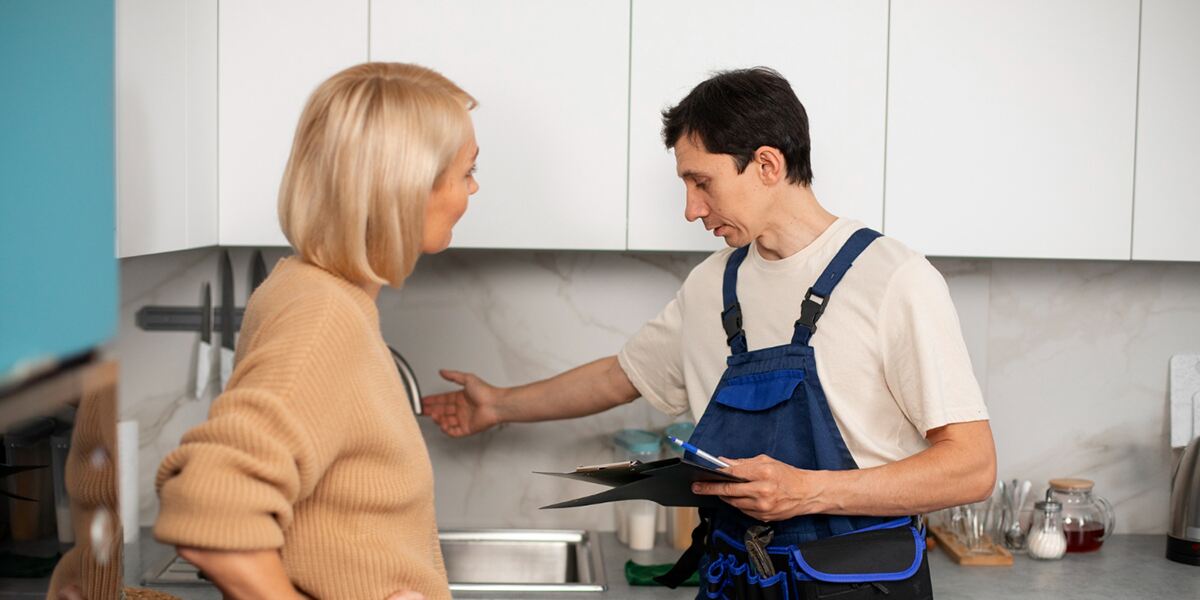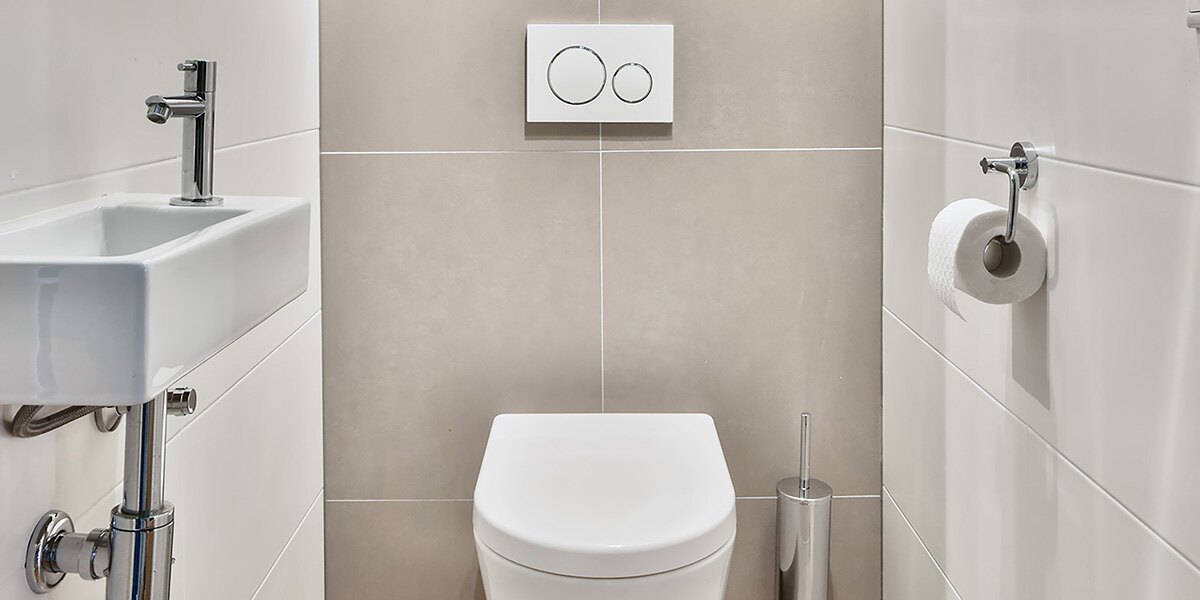Your home plumbing system is an amazing modern invention that supports your family and your property in many ways. Most modern homes have piping, drains, pumps, and more hidden backbones. These networks of faucets, drains, and more make up your plumbing system.
As helpful and invaluable as your home plumbing system is, its many components are subject to eventual failure. If your plumbing system doesn’t work properly, you and your loved ones lose access to fresh water for drinking, cleaning, and even irrigation. Unfortunately, plumbing system malfunctions happen all the time.
If you are experiencing any problems with your system, you can trust the experts at Champion Plumbing to come to your rescue rapidly. Whether you suffer from leaks, pipe breaks, or poor water pressure in your home, Noble’s reliable plumbing services have the tools and expertise to rectify any issues.
One prevalent form of plumbing system damage is low pressure. Low water pressure problems cause system inefficiency and make it harder for you to get almost anything done. Modern plumbing systems are relatively complex, and because of this, many different issues may cause low water pressure.
Thankfully, if you keep your eye out for certain telltale symptoms of low water pressure, you can enlist professional help before the problem gets worse. Some signs of low water pressure in your home include:
- pressure drops with multiple faucet use
- washing machine inefficiency
- pressure regulator valve failure
- cavitation sounds
- water meter reading problems
- water fixture flow rates
- unresolved leaks
- low pressure gauge readings
Stay Alert to Plumbing System Warnings
When one of your plumbing system components fails, it can cause the entire system to malfunction. Water pressure issues are one telltale sign of deeper systemic problems. If you notice one or more of the following plumbing issues in your system, don’t hesitate to call the pros for help.
1. Pressure Drops with Multiple Faucet Use
Modern home plumbing systems include multiple faucets and outlets for greater ease and convenience. Even though your home has many outlets and faucets, the pipes are still small enough to allow the overall network to achieve reasonably high pressures. However, this system only works properly when the overall water pressures are where they should be.
Thus, if you open a valve in more than one room and notice a significant drop in water volume, there may be a pressure issue at work. Anything more than a small loss indicates a considerable pressure drop across the entire system.
2. Washing Machine Inefficiency
Washing machines are modern marvels that help us thoroughly and efficiently clean our clothes. Engineers design washing machines to operate at optimum levels, providing they have proper electricity and water supplies. The water that your machine uses to do its cleaning job needs to be at a specific pressure for the machine to operate correctly.
When system water pressure drops below the threshold, the machine may have trouble filling itself and doing other essential tasks. If this happens, you may notice that loads of clothes no longer come out looking as clean as they should. If you notice this drop in washing machine performance, and it persists, this may point to a deeper overall pressure issue.
3. Pressure Regulator Valve Failure
The water that enters your home plumbing network gets there because of the efforts of powerful town or municipal pumping stations. These pumping stations can deliver water to your local main at 40 to 80 psi. Many systems use pressure regulator valves to keep the pipes and other plumbing components in your house safe.
As their name suggests, pressure regulator valves help to even out the pressure between the municipal main and your residential plumbing system. Unfortunately, they don’t always work with a high level of precision. This can lead to poor water pressure in your home.
Over time, minerals and other substances can slowly build up in and around the inside of the pressure regulating valve. Deposits like these narrow the space inside the valve gradually, leading to obstructions and problems with water pressure. Thus, if you begin experiencing issues with water pressure in your home, put your pressure regulator valve on your checklist.
4. Cavitation Sounds
Sometimes your home plumbing system makes sounds that can warn you of impending failure. One example of this is cavitation sounds. Cavitation occurs when bubbles form in the low-pressure fluid and collapse when they encounter higher pressures.
This bubble formation and collapse cycle can create very loud noises that are unmistakable. The bubbles that allow cavitation and water hammering to happen usually form in lower pressure conditions. Pressure drops can happen inside impellers and pumps, but water pipes that are narrow or otherwise obstructed also give rise to this phenomenon.
If you begin hearing loud banging noises within your pipes, it could indicate cavitation and low system pressures.
5. Water Meter Reading Problems
Water meters are invaluable tools that help you to minimize your water use. They can also cause or predict problems with your overall water pressure level. Your home plumbing system likely includes a specialized water meter that keeps track of your usage level.
To get more value out of your water meters, you should monitor your average water usage over a set time. This kind of monitoring gives you an idea of how much water you and your household use daily, weekly, or monthly. If you notice your water meter readings deviating from these established baselines and your usage levels haven’t changed, the problems may be with the water meter valve itself.
6. Water Fixture Flow Rates
You should also keep an eye on the average flow rate of the various faucets in your house. For example, monitor how much water comes out of your kitchen faucet, bathroom faucet, and garden hoses over a given amount of time. Ensure you do your monitoring when the system is free of damage and working at optimum levels.
This information is important because if you notice issues with the flow rate of these fixtures in the future, you’ll know that you have a problem on your hands. It’s important to note that individual fixtures suffer from internal build-up that can reduce water flow rates. Therefore, if you notice less water flow across all your faucets, it is likely an overall system pressure issue.
7. Unresolved Leaks
For your plumbing system to work properly, you want to make sure that it has appropriate pressure. Unfortunately, small leaks can and do happen within plumbing pipes and components. Even small leaks allow water to escape, promoting system depressurization.
Because of their potential to cause drops in system pressure, you should always immediately address even the most minor leak.
8. Low Pressure Gauge Readings
You can use pressure gauges if you want a surefire and scientific way to determine if your system is properly pressurized. They come in different styles and designs, but they allow you to test pressure across multiple points of your plumbing system.
Whether you attempt it yourself or employ the services of a professional, a gauge test is one of the fastest and most accurate ways to pinpoint problems with water pressure in your home.
Call Champion Plumbing in Noble, OK
Plumbing system pressure problems are insidious and hard to find. Nevertheless, at Champion Plumbing, we take on and solve issues like water pressure problems in the shower and more. If you’re suffering from the symptoms of poor water pressure in your home, you don’t have to fight the battle yourself.
Call Champion Plumbing now at 405-504-3649 to get your home plumbing system back to where it should be.






